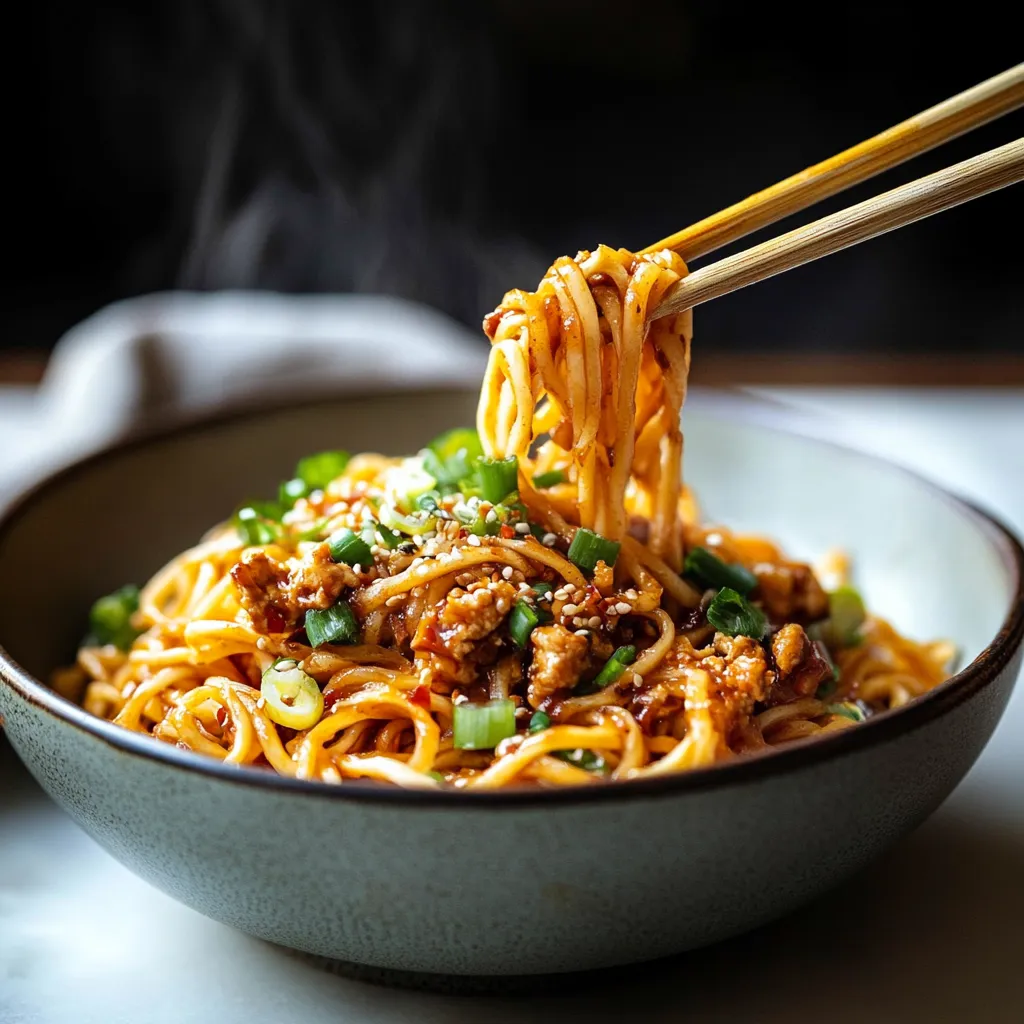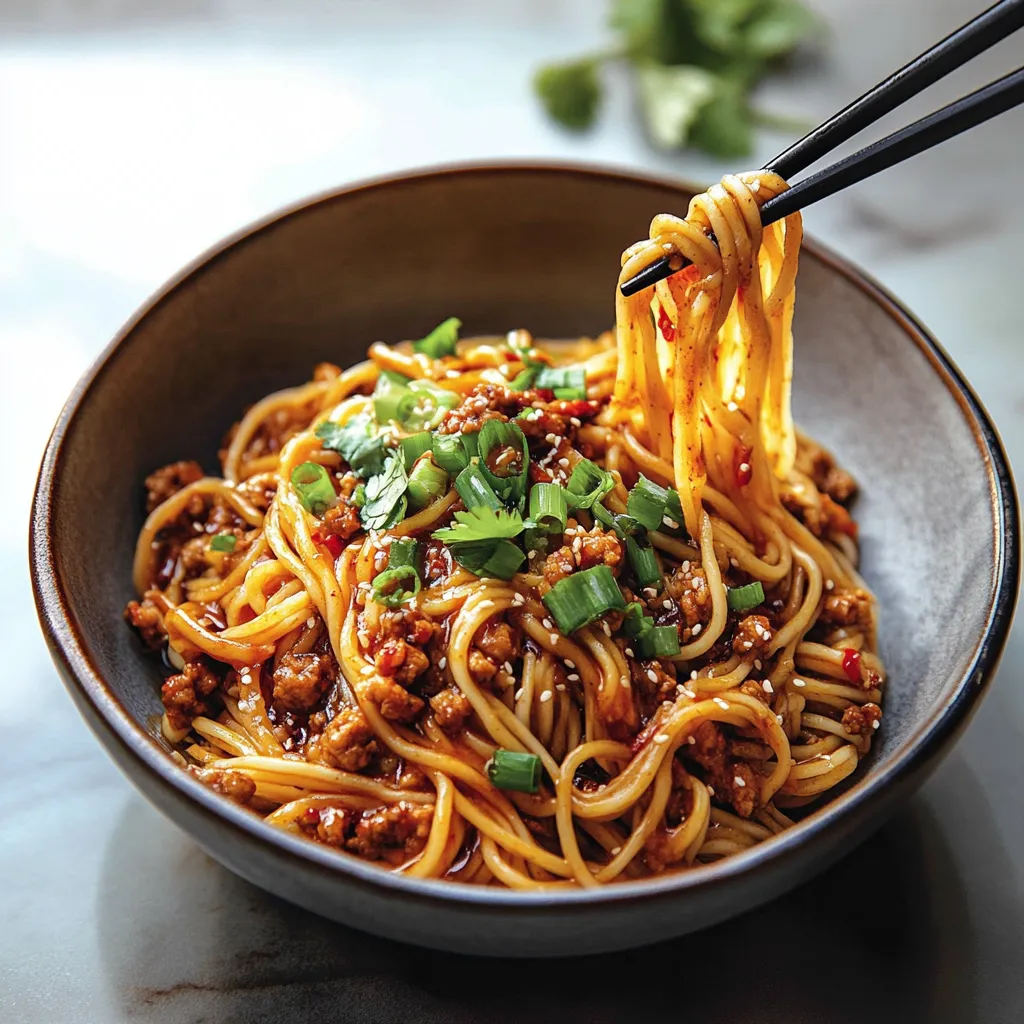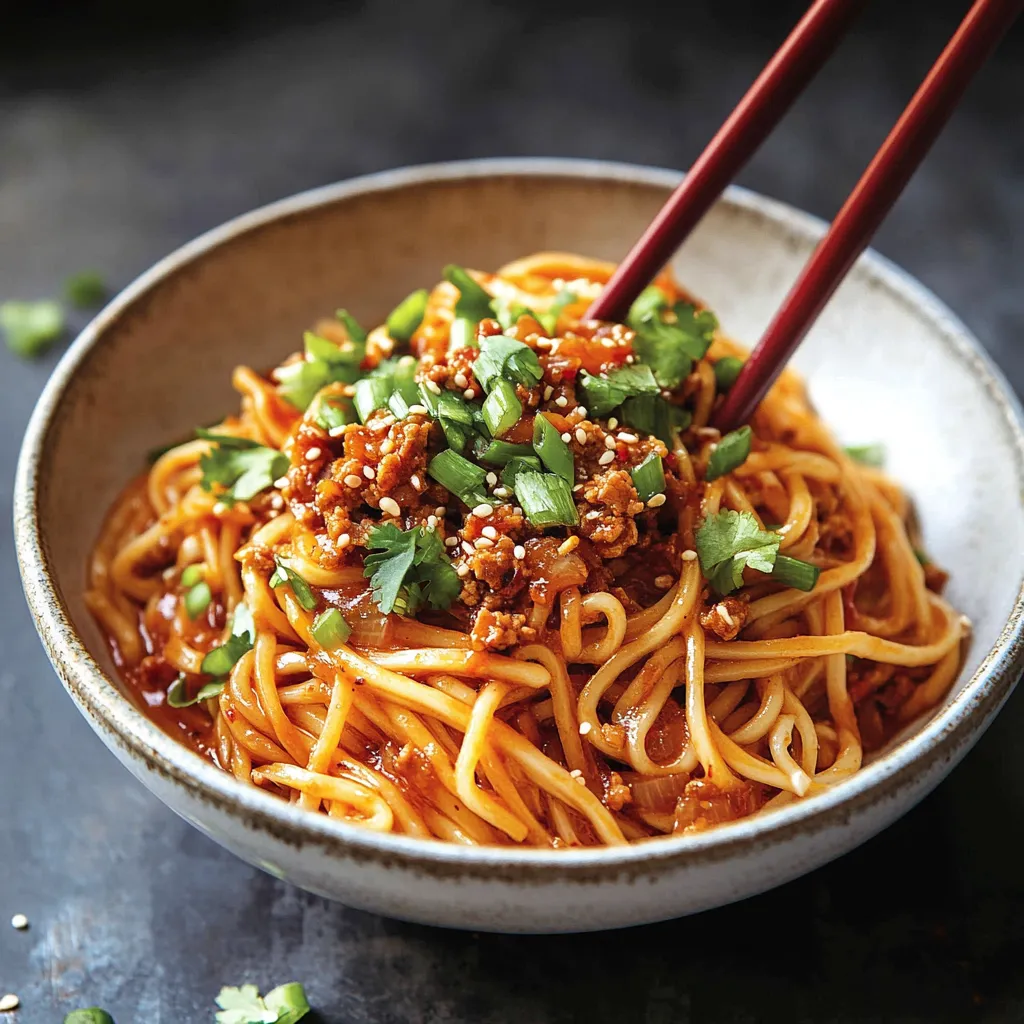 Save
Save
Fired-up Szechuan noodles turn basic pantry stuff into a bold meal that tastes just like what you get at a good Chinese spot—but you can whip it up in about half an hour. When you just want something tasty and loud after a long day, skip the line and make this instead.
After I got back from China, I was on a cooking kick and tried out these noodles. The bold, spicy, and salty combo instantly took me back to the noisy side streets of Chengdu—100% real deal flavors.
Bold Ingredients List
- Dried noodles: If you don't have Asian noodles, plain spaghetti totally works. It's sturdy and stands up to the punchy sauce.
- Vegetable oil: Grab any neutral oil that can handle some heat—perfect for good stir frying.
- Green onions: These add a punch while cooking and a burst of freshness when sprinkled on top.
- Fresh ginger and garlic: Start with the real stuff for that unmistakable flavor—skip the powdered versions for best results.
- Soy sauce: Loads up the dish with deep, savory umami goodness. If you’re watching your salt, low-sodium is fine.
- Rice vinegar: This gives everything a nice tang and brightness to offset the chilies. Don’t swap for plain white vinegar.
- Sugar: Just a pinch is enough to mellow out the zing of the spices.
- Szechuan chili paste: What gives these noodles their signature spicy buzz. Hunt for it in the Asian aisle or specialty stores.
- Hoisin sauce: Adds sweet, rich notes kind of like a Chinese BBQ glaze.
- Broth: Helps the sauce cling to every noodle—veggie broth if you want it meatless.
- Snow peas: Puts in that crisp crunch. Go for firm, bright pods every time.
- Optional garnishes: Sprinkle on crushed peanuts or sesame seeds for a nutty finish.
Lazy Step-by-Step
- Bring It All Together With the Noodles:
- Once you’ve drained the noodles, toss them right in with the veggies inside the wok. Pour over your sauce and mix it all up so everything is nice and coated. Let it cook for another couple minutes. If it’s too thick, splash in a bit of that pasta water you set aside.
- Cook the Veggies:
- Slick up your hot wok with oil. Throw in the chopped ginger and garlic, and keep them moving so nothing burns. Once they smell amazing, drop in the snow peas and toss for a couple minutes—keep them bright and crunchy. Toss in half your green onions too.
- Whip Up the Sauce Mixture:
- While your water heats, get a bowl and whisk together broth, soy sauce, vinegar, chili paste, hoisin, and sugar until they’re fully combined and the sugar’s gone. Adjust the flavors if you want.
- Get the Noodles Ready:
- Boil up a big pot of salted water. Cook your noodles until they’re just a bit firm—you want them al dente since they'll cook more in the pan. Save a little pasta water before you pour everything off.

I remember my first time trying to pull off these noodles for my (now) wife. Thought I’d go big and accidentally tripled the Szechuan pepper. We sat there with ridiculous grins and numb mouths, laughing through the whole meal. She married me anyway—maybe for noodle redemption.
Prep Ahead
Made too much? Lucky you. Stick leftovers in the fridge—they’ll keep great for three days. They taste even better later as the flavors blend more. When you’re heating them up, splash a little water or broth to loosen the sauce since the noodles soak it up. Two minutes in a hot pan or under two in the microwave and they’re good as new. If you’re planning to meal prep, keep the noodles and veggies a touch undercooked for best results.
Tasty Protein Swaps
If you want more than veg, these noodles happily soak up any protein you throw at them. For chicken, let thin slices hang out in some soy sauce, then cook them fast and set aside till you’re tossing everything together. With beef, do the same with sirloin or flank cut thin. Tofu? Press it, cube it, pan-fry till crispy, then add at the end. Shrimp just needs two minutes until it’s opaque and pink—dab on paper towels before mixing in.
Boost or Tone Down the Spice
The best thing here—you’ve got total say on just how much fire you want. Want it pretty mellow? Use just a teaspoon of chili paste for the fragrance, not the heat. For a bit more bite, start at a tablespoon and taste as you go. Feel brave? Go all-in with up to three tablespoons—but fair warning, that’ll be seriously spicy. Heat sneaks up on you, so better to add more later if you want.

The way this dish mixes numbing, spicy, and deep savory flavors is just unbeatable—definitely worth getting the hang of.
Common Recipe Questions
- → Can I adjust the spice level of these Szechuan noodles?
Totally! Most of the heat is from the chili paste. For less spice, use only a tablespoon and see how you like it. Want more fire? Add a splash of chili oil or a shake of red pepper flakes. Since the sugar and hoisin keep things balanced, tweak those too if you're changing the heat a lot.
- → What protein would work well with these noodles?
Lots of choices work great here. Stir in shrimp, beef, or thin strips of chicken (make sure they're cooked before you add veggies). Veggie pals will love tofu or tempeh—pan-fry them first for extra texture. Or, if you're in a rush, shred up some ready-made rotisserie chicken and toss it in.
- → What can I substitute for snow peas?
If you don't have snow peas, you can use snap peas, sliced carrots, strips of bell pepper, chopped bok choy, or little broccoli pieces. Try mushrooms or baby corn for a bigger bite. Just remember to let denser veggies cook a bit longer so they stay tasty.
- → Where can I find Szechuan chili paste if my grocery store doesn't carry it?
You can usually pick up Szechuan chili paste at any Asian market. If not, mix sambal oelek and a bit of ground Szechuan peppercorns. Even sriracha plus hoisin will work. Gochujang with a splash of vinegar can stand in for it too, but it'll taste a little different.
- → Can I make these Szechuan noodles ahead of time?
Fresh is always best, but if you want to prep ahead, cook the noodles until they're firm, rinse with cold water, and toss in some oil so they don't stick. Sauce and veggies can be made or chopped a few days early. Just stir-fry everything together fast when you're hungry. Leftovers keep for a couple days, but the noodles might get softer after sitting.
- → What type of noodles work best for this dish?
Go for Chinese wheat or lo mein, but honestly, spaghetti works in a pinch. Udon noodles, ramen (ditch the packet), or soba are all great too. If you prefer rice noodles, be gentle since they break pretty easy. Whatever you use, leave them a little underdone because they'll cook more with the sauce.
